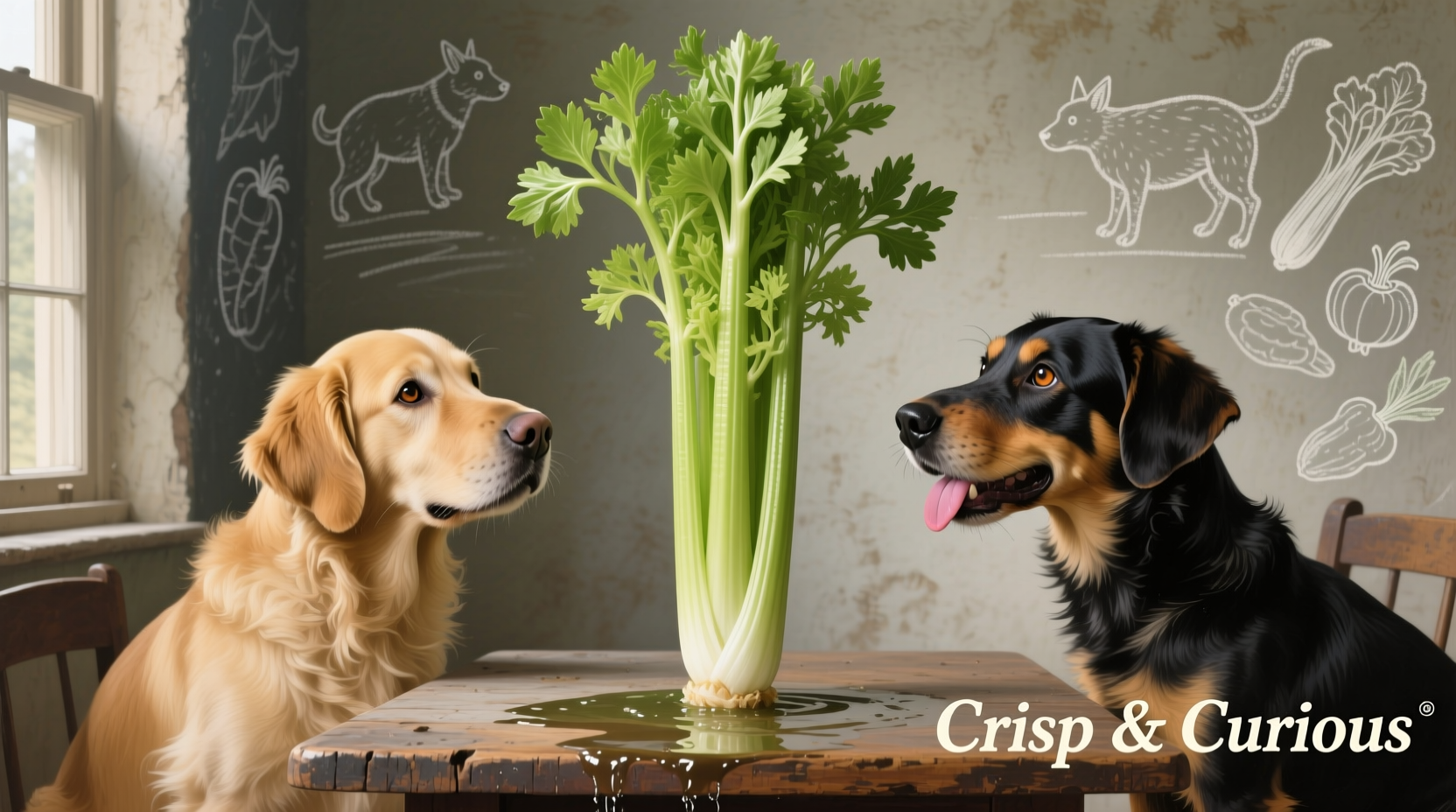Many dog owners wonder whether they can share their healthy snacks with their furry companions. As pet parents increasingly seek natural, wholesome treat options, celery has emerged as a popular choice. This crunchy vegetable offers notable benefits but requires proper preparation to ensure your dog's safety.
Why Celery Is Safe for Dogs (With Proper Preparation)
Celery ranks among the safest vegetables you can share with your canine companion. According to the ASPCA Animal Poison Control Center, celery doesn't contain any toxic compounds harmful to dogs. Unlike onions, garlic, or grapes—which pose serious health risks—celery passes veterinary safety checks for canine consumption.
What makes celery particularly valuable for dogs is its nutritional profile. This low-calorie vegetable provides:
- High water content (95%) for hydration
- Dietary fiber to support digestive health
- Vitamins A, B, and K for immune function
- Potassium for muscle and nerve function
- Antioxidants that combat cellular damage
Understanding the Choking Hazard: Size Matters
While celery's fibrous texture benefits human digestion, it presents a significant choking risk for dogs. Whole celery stalks or large chunks can become lodged in a dog's throat or cause intestinal blockages. This risk varies considerably by breed size:
| Dog Size Category | Recommended Celery Piece Size | Maximum Daily Amount |
|---|---|---|
| Small breeds (under 20 lbs) | 1/4 inch cubes | 1-2 small pieces |
| Medium breeds (20-50 lbs) | 1/2 inch cubes | 3-4 small pieces |
| Large breeds (over 50 lbs) | 1/2 to 1 inch cubes | 5-6 small pieces |
Always supervise your dog when introducing celery for the first time. Some dogs may experience mild digestive upset as their system adjusts to the increased fiber content.
Preparing Celery Safely for Your Dog
Follow these preparation guidelines to maximize safety and nutritional benefits:
- Thoroughly wash celery to remove pesticides and dirt
- Remove all leaves (they contain higher concentrations of psoralens)
- Cut into appropriate sizes based on your dog's breed
- Start with small portions to monitor for adverse reactions
- Never add seasonings like salt, garlic, or onion powder
For dogs with sensitive stomachs, consider steaming celery briefly to soften the fibers while preserving most nutrients. Raw celery provides more dental benefits through its crunchy texture, but cooked celery may be easier to digest for some dogs.

When Celery Might Not Be Appropriate
Celery serves as an excellent low-calorie treat for most dogs, but certain health conditions warrant caution:
- Dogs with kidney disease should avoid celery due to its oxalate content
- Dogs prone to urinary stones may need to limit high-oxalate foods
- Puppies under 6 months should stick to veterinarian-approved foods
- Dogs with known celery allergies (rare but possible)
The Veterinary Information Network recommends following the 10% rule—treats should comprise no more than 10% of your dog's daily caloric intake. For a 50-pound dog, this means celery treats should provide fewer than 40 calories per day.
Celery in Your Dog's Diet: Practical Applications
Integrating celery into your dog's routine offers several practical benefits:
- Weight management tool for overweight dogs needing low-calorie snacks
- Training reward that won't disrupt dietary balance
- Fresh breath aid thanks to its natural cleansing properties
- Hydration booster during hot weather or after exercise
Many pet nutritionists recommend pairing celery with other dog-safe vegetables like carrots or cucumbers to create balanced snack mixes. This variety ensures your dog receives a broader spectrum of nutrients while preventing dietary boredom.
Alternative Vegetable Options for Dogs
If your dog doesn't enjoy celery or you want to diversify their vegetable intake, consider these safe alternatives:
- Cucumbers (even lower in calories)
- Carrots (great for dental health)
- Green beans (excellent for weight management)
- Blueberries (packed with antioxidants)
Remember that each dog has unique nutritional needs and preferences. What works well for one dog might not suit another, so always introduce new foods gradually and monitor your pet's response.











 浙公网安备
33010002000092号
浙公网安备
33010002000092号 浙B2-20120091-4
浙B2-20120091-4